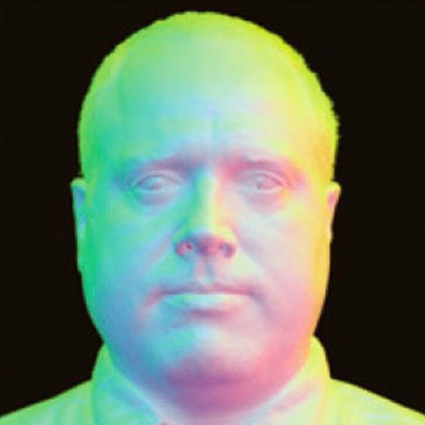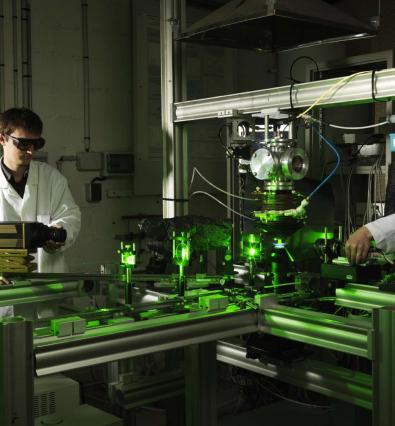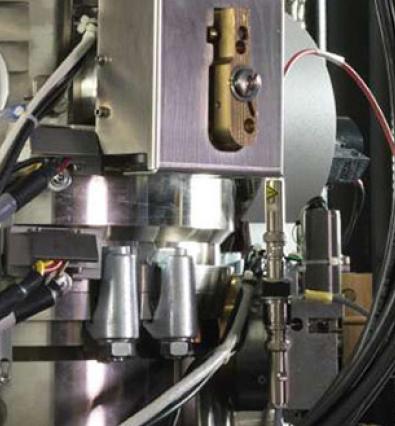In support of its research activities, CentraleSupélec has developed state-of-the-art technological platforms, in making its own equipment or in collaboration with its main partners.
SINAPSE: immersive 3D room for research and teaching
As part of the Digiscope Team CentraleSupélec has developed the Sinapse equipment (Digital Interactive Display Room for Pedagogy and The Science of Excellence), a wall of images based on a system of back projection in 3D, on a screen that is approximately 10m2. The main uses of the platform are the visualization of scientific data derived from high-performance computing, teaching and student projects.
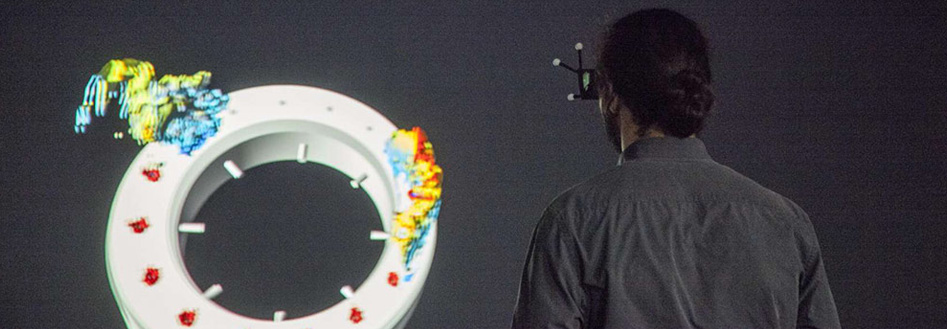
In order to enhance the immersion experience, motion tracking is provided by four infrared cameras. The computing power for real-time rendering is performed by a machine with 32 cores, 1TB of RAM, two NVIDIA K6000 graphics cards and SSDs.
Scientific Computing Center: high performance
Active since 2010, CentraleSupélec’s Scientific Computing Center offers a high-performance service for research in the field of digital simulation. In fact, new methods are developed in the center that are suitable for parallel computing, as well as codes for national and European supercomputers. It is also a place to meet and exchange knowledge through seminars and training.
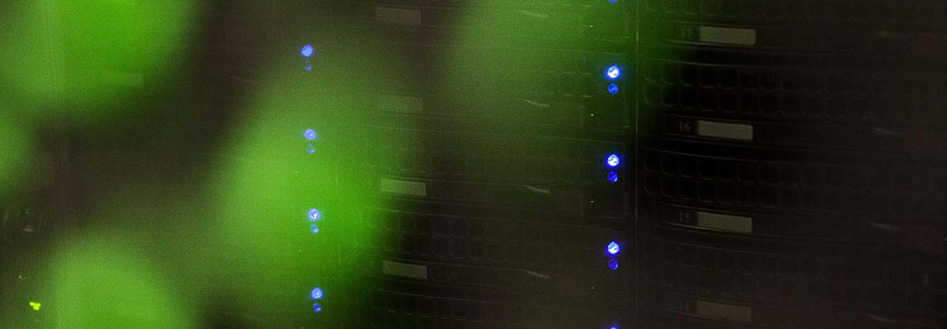
Until 2014, the center provided the power of 816 computing cores with more than two terabytes of RAM and approximately 30 terabytes of storage; the platform recorded a load factor close to saturation, especially due to its growing number of users. The extension implemented offers 288 computing cores and 384 gigabytes of additional memory, resulting in faster and more efficient machines.
SEM-FIB Helios 660 Microscope
At the MSSMat Laboratory, the Helios-660 combines scanning electron microscopy (SEM) with high-precision ion machining with a focused ion beam (FIB). It is equipped with tools for crystallographic (EBSD) and chemical analysis, as well as seven different sensors for electronic imaging.
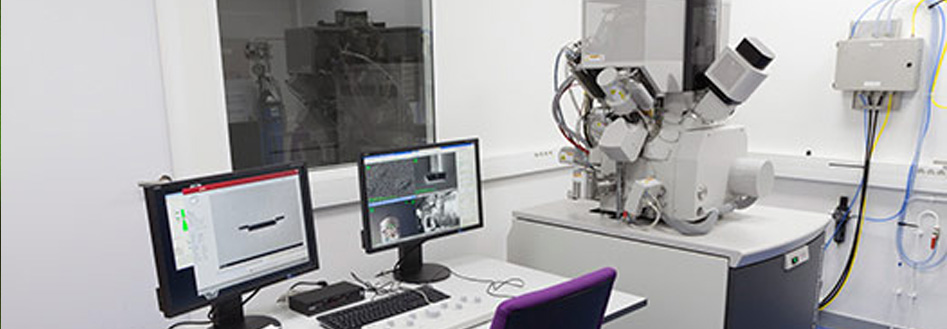
It allows:
- high-resolution surface imaging of samples (up to 0.7 nm resolution at low voltage);
- sampling, such as preparing observed transmission electron microscope slides, possibly to atomic resolution in the future;
- full characterization of the microstructure in three dimensions (crystallographic and chemical analysis);
- interfaces for observation on these scales;
- three-dimensional reconstruction of a sample, such as nanoparticles and their entanglement;
- machining of small samples taken at specific locations on the surface of conductive \ or non-conductive samples (charge neutralizer available for insulating samples).
The electron column (500V-30kV) allows, through a monochromator and a beam deceleration stage, sub-nanometric resolutions to be achieved. It is equipped with several sensors that could possibly superimpose their signals, in order to better reveal the minutest of details in the microstructure. The ionic column, with a resolution of 4 nm, enables precise etching of complex structures on the nanoscale, whether to prepare slides for microscopy in transmission or for tridimensional characterization.
TITAN Transmission Electron Microscope
The TITAN3 G2 Transmission Electron Microscope can work with numerous voltages (60 to 300 kV), which allows for a compromise between final resolution and degradation. With great stability, it can operate in sensor mode and correct aberrations, resulting in a very good spatial resolution.
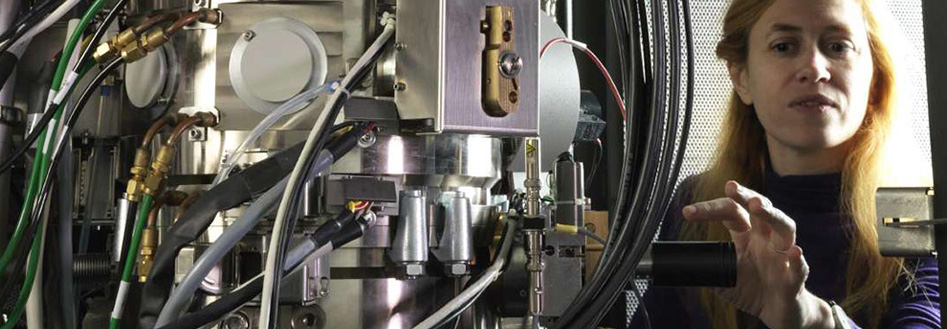
Combined with various means of analysis (chemical by energy-dispersive X-ray, as well as electronic by electron energy loss), this mode provides structural, chemical and electronic mapping of materials on the atomic scale. Alternative interactions include tomography, with the above chemical analysis, to enable a true chemical nanotomography but with a final resolution of 1 nm. Numerous other observation methods cited above can be used as well.
Plasma Torch
Inaugurated in November 2014, the plasma torch was created in the EM2C Laboratory to test materials that protect space capsules as they enter the atmosphere.
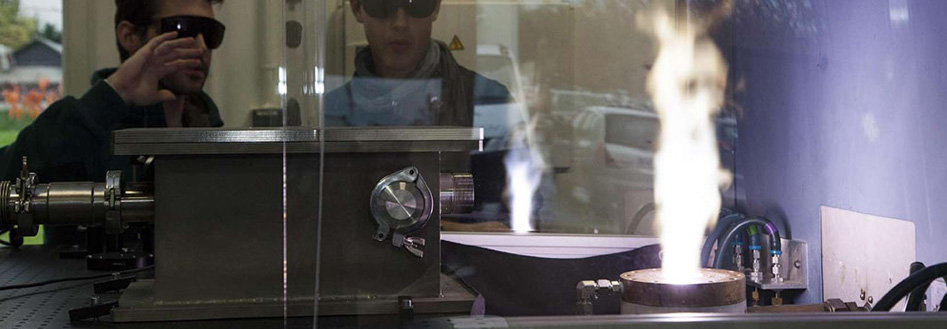
Complementing existing technologies in the study of atmospheric entry, this torch provides enough power to generate realistic entry plasmas at temperatures of up to 10,000 K.
It is also equipped with advanced optical diagnostics to better understand the physics of radiation and ablation, and thereby contribute to the development of more accurate models of these phenomena. More broadly, it will be a new and valuable tool to help strengthen European research and technology in the field of space plasma.
Smart Room
The Smart Room is an experimental platform at CentraleSupélec’s Metz campus.
It includes a sensor network (cameras, microphones) and information dissemination systems (screens, speakers). The robotic platform allows for experimental research conducted in the field of cognitive and interactive robotics in an environment where people and robots coexist.

This platform allows for the implementation of research conducted by the research teams from UMI No. 2958 GeorgiaTech-CNRS (IDMaD [Informatique Distribuée et Masses de Données (Distributed Informatics and Data Masses)] and MALIS) in the fields of signal processing, digital and symbolic learning and distributed computing. It is also open to other external academic or industrial projects.
Light stage
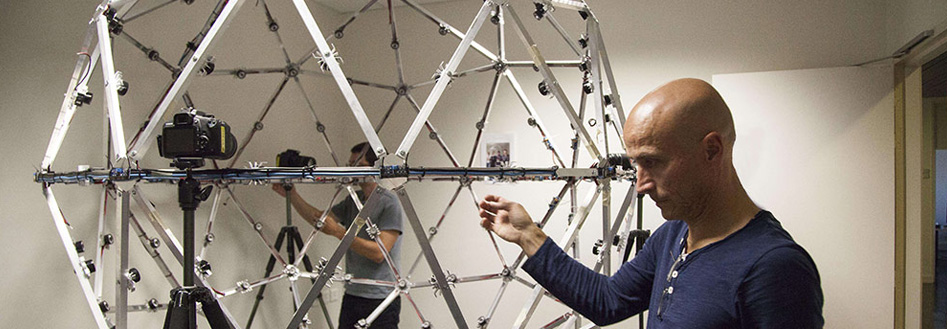 While the giants in multimedia creation are grappling over the best computer graphic designers to design movies and ever more realistic video games, researchers at the University of Southern California have developed a high-resolution 3D scanner for capturing the light properties (texture and reflectance) of any living or non-living object.
While the giants in multimedia creation are grappling over the best computer graphic designers to design movies and ever more realistic video games, researchers at the University of Southern California have developed a high-resolution 3D scanner for capturing the light properties (texture and reflectance) of any living or non-living object.
The reasons for such research? The human brain is able to discern CGI images from real images with an unbelievable success rate. This capability is greatly increased when it is a human face: the smallest imperfection results in the loss of all traces of realism.
This is where Light Stage technology comes into play. It is able to generate a very high-definition 3D light model of the human face, or even an entire actor! All that is required is to use an adapted algorithm to add this model to a given scene. The result is amazing, and even our brains can no longer tell the difference.
A group of four students at the Rennes campus have started to realize such a system, the first in France !
|
|
Light Stage technology in the spotlightNormal mapping, achieved by Light Stage A complete model of the human face is provided by a very detailed 3D model associated with a texture and reflectance matrix. The feat achieved by current Light Stage technology is, notably, capturing this 3D model; past technologies could only achieve the extraction of a rough model by stereoscopy. This degree of detail can be obtained with the use of specific properties of the skin: the directly reflected light retains its polarization, whereas that reflected by subsurface scattering partially loses its polarization. Through filtering and variation, it is possible to extract the specular reflection of the face, in all directions of space. It is this information which, by relatively simple mathematical transformations, reveals the finest details of the geometry in the face, down to the smallest pore in the skin ! |
Electronic Spectroscopy Platform
This platform is used by the Laboratoire de Génie Electrique de Paris (UMR 8507 CNRS / Supélec).
Principle of electronic spectroscopy: Chemical surface analysis of materials (except H and He) and information on their electronic structure. Qualitative, quantitative and non-destructive ultrahigh vacuum analysis (10-9-10-10 Torr).
Depth of analysis: X-ray photoelectron spectroscopy (XPS): 3 to 5 nm; Auger spectroscopy: approximately 2 nm; UV photoelectron spectroscopy (UPS): 1nm
Contact: David Alamarguy - david.alamarguy@supelec.fr


